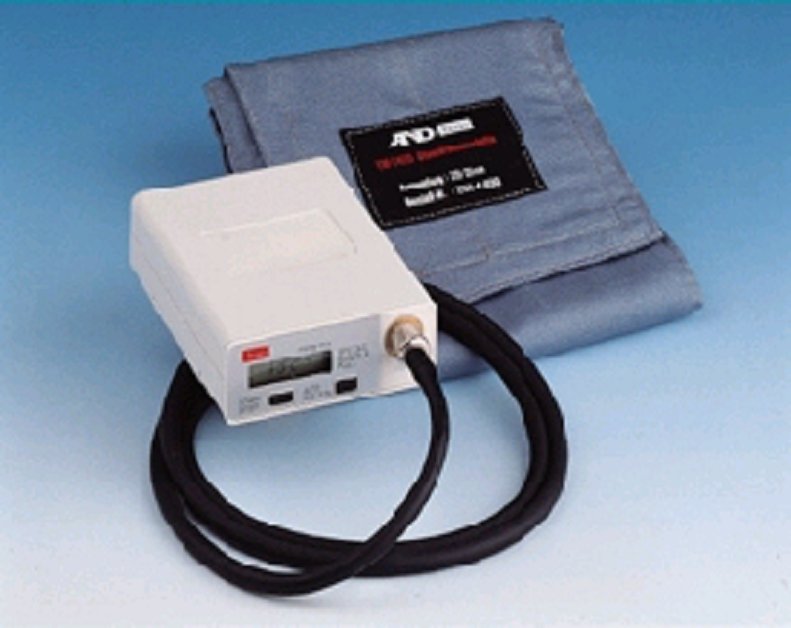
|
CIRCA
|

|
Abstract:
For the long-term effect of pressure on the cardiovascular system the
complete circadian pattern of blood pressure must be taken into account: healthy
blood pressure and heart rate tracings show a 10-20% drop during the night,
apart from not running too high during the working day. The hypothesis to be
tested is that the pattern of 24-hr blood pressure is drastically changed under
microgravity. The day-night difference will generally be diminished due to the
absence of gravitational load during the working day and the sleep disturbances
due to environmental conditions during the ‘nightly’ sleep period
in Space. This project combines aspects of cardiovascular control (by non-invasive
blood pressure measurement) and psychophysiological effects of the space environment
(by sleep quality- and daytime sleepiness questionnaires). Knowledge of the
long-term effect of microgravity on circadian control of the circulation will
have consequences for operational medicine in prolonged stay of Man in Space.
Essential for this experiment is to obtain data in the sleep time period.
The methods to be used are 1. During 24 hr every 15 minutes a repeated measurement
of upper arm blood pressure by a portable automatic cuff-inflating and deflating/measuring
system (Commercial BMI-device, present at ISS; training models of this device
are available through Intospace Gmbh). 2. Continuous ambulatory non-invasive
measurement of (finger-) blood pressure using the Portapres. This Dutch (TNO-)
developed battery-driven instrument is used to measure 24-hr blood pressure
profiles in complete autonomy from other equipment. Since its first development
various space-qualified versions of the device (Portapres and Finapres) have
been delivered by BMI-TNO (Amsterdam) to NASA and CNES. We propose to use the
CNES-delivered device that is on board ISS since the Andromede mission. 3. Analysis
of variability of the continuous blood pressure and heart rate both during normal
daily activities and during short-lasting sessions of controlled psychological
stress (computer game type) as well as other physical stimuli as paced breathing
and as stand test (not inflight of course) gives additional information on the
relative roles of the sympathetic and parasympathetic branches of the autonomic
nervous system in neurogenic cardiovascular control 4. Analysis of the full
blood pressure wave as obtained by the Portapres enables one not only to extract
beat-to-beat values for systolic, mean and diastolic blood pressure and heart
rate but to estimate (relative) changes in cardiac output and total peripheral
resistance as well. This will help unveil the phenomena which are basic to the
observed blood pressure and heart rate patterns. 5. Questionnaires on sleep
quality and daytime sleepiness scores will help evaluate the impact of changed
circadian pattern on the well being of the astronauts/cosmonauts.
The conclusions to be reached will be a deepened insight into the physiological
factors that make up the circadian pattern of blood pressure and heart rate,
both in Space and on Earth. We will be able to discriminate between the purely
cardiac (heart rate, contractile force) and vascular (cerebral/systemic vascular
resistance) effects. On Earth, a good part of the awake day we have to fight
gravity when we go about in the upright posture. In Space the work-rest cycle
is comparable, although the workload may be quite heavy and the impact of external
factors (noise, other disturbances) may disturb both night rest and daytime
alertness. .
Address corresponding
author:
Dr. John M. Karemaker,
Academic Medical Center, Dept. of Physiology, Univ. of Amsterdam, AMC-M01-08,
P.O. Box 22660, 1100 DD Amsterdam, The Netherlands. Tel +31-20-5664827, Fax:
+31-20-6919319, E-mail: j.m.karemaker@amc.uva.nl.
Co-PI: Pr. Claude Gharib, PhD, Laboratoire de physiologie de l’Environnement,
Faculté de Médecine Lyon Grange Blanche, Lyon, FR.
Co-Investigators:
Marc A. Custaud, MD, PhD, Laboratoire
de physiologie de l’Environnement, Faculté de Médecine Lyon
Grange Blanche, Lyon, FR.
Mrs. Janneke Gisolf, Med. drs., Gert A. van Montfrans, MD, PhD, Wim J. Stok,
MSci; Academic Medical Center, Dept. of Physiology, UvA, Amsterdam, The Netherlands
Introduction: In healthy subjects blood pressure exhibits a distinct circadian rhythm, being higher during the day and some 10-20% lower during the night. The increase during the day is to a large extent a consequence of the upright posture. For another part the daytime increase is due to the action of the sympathetics in support of daily activities. The decrease during sleep is considered a sign of good health, sympathetic activity is almost abolished, and the hydrostatic effects of the upright posture have disappeared. In current medical literature the importance of the average blood pressure over the whole 24 hr period of the day is stressed rather than just the day-time blood pressures. Therefore, also the overnight lowering should be taken into account when evaluating the medical risk of hypertension. Hence, the measurements proposed here are ?beyond their basic scientific interest? also of importance for any long term stay in microgravity. Moreover, Space gives us a test-bed where the 'pure' effects of hormonal and neural mechanisms regulating blood pressure, blood flow and fluid homeostasis can be studied over the day without the superimposed stress of having to uphold sufficient brain perfusion against gravity.
Hypothesis: The hypothesis to be tested is that the pattern of 24-hr blood pressure is drastically changed under microgravity. The day-night difference will generally be diminished due to the absence of gravitational load during the working day and the sleep disturbances due to environmental conditions during the ‘nightly’ sleep period in Space. This project combines aspects of cardiovascular control (by non-invasive measurement of blood pressure) and psychophysiological effects of the space environment (by sleep quality- and daytime sleepiness questionnaires). Knowledge of the long-term effect of microgravity on circadian control of the circulation will have consequences for operational medicine in prolonged stay of Man in Space.
Significance:
The average level of blood pressure over the day is a good measure of the total
burden to the heart. In the ageing population we will see more and more patients
in the coming decades suffering from cardiovascular diseases. The present study
will help untangle the various stressors that determine the cardiovascular load
at different moments of the circadian cycle. This will be of importance for
optimized pharmacotherapy during the 24-hr day. Moreover we will lay the grounds
for better medical care during prolonged stay of Man in Space.
Methods:
In essence Portapres and BMI give complementary information.
BMI is easier on the subject, imposing little or no impediments to normal daily
activities. However, BMI gives only momentary observation of one blood pressure
and heart rate reading every 15 minutes (or half hour during sleep). Portapres,
on the other hand, gives continuous information on what is going on in the cardiovascular
system. However, that method imposes limitations on what the subject may do,
in particular the use of the hand where the measurement is going on is very
much restricted. In the Space surrounding these impediments may be too much
for the normal work that the cosmonauts have to do during the day.
Therefore we propose a complementary setup where BMI is used to give the overall
picture during a 24-hr period, while Portapres is used to ‘fill in’
the details of what BMI records. The Portapres recordings will occur on selected
times during the day, as detailed below and to be arranged with to the crew
so as to minimize interference with the astronauts’ normal work. In view
of our objective we want to have the two measurements running in parallel. This
will have to be arranged with the crew in the training and baseline data collection
sessions to see if this scientific requirement can be put into practice. If
not, the two recording days will have to be separated, preferably to be run
on consecutive days.
In addition we want occurrences of objectively the same physical and psychological
workloads during the recording day both on the ground (BDC, recovery) and inflight.
This will comprise some simple autonomic reflex tests (paced breathing, Valsalva’s
maneuver) and a simple computer-driven psychological stress test.
Previous experience: The teams of Karemaker and Gharib each have participated in earlier space flights (D2, Neurolab, BTF) parabolic flight campaigns and ground-based control studies (HDT-88, HDT-94) to name but a few international ESA/CNES/DARA undertakings.
New information expected:
1. Impact of the Space environment on 24-hr cardiovascular control.
2. Breakdown of the Earth-bound circadian cardiovascular pattern into gravity-dependent
and -independent factors.
3. Insight into the objective workload of intense shortlasting space expeditions
on the participating astronauts.
4. Quantification of the cardiovascular effects of controlled psychological
stress in this type of expedition.
Research instruments used in this experiment
 The Portapress. This instrument is able to record blood presseure profile during a single heart beat. These profiles are measured by means of a finger cuff. |
 The BOSO BMI for standard upper arm blood pressure measurements. |
Related Papers: